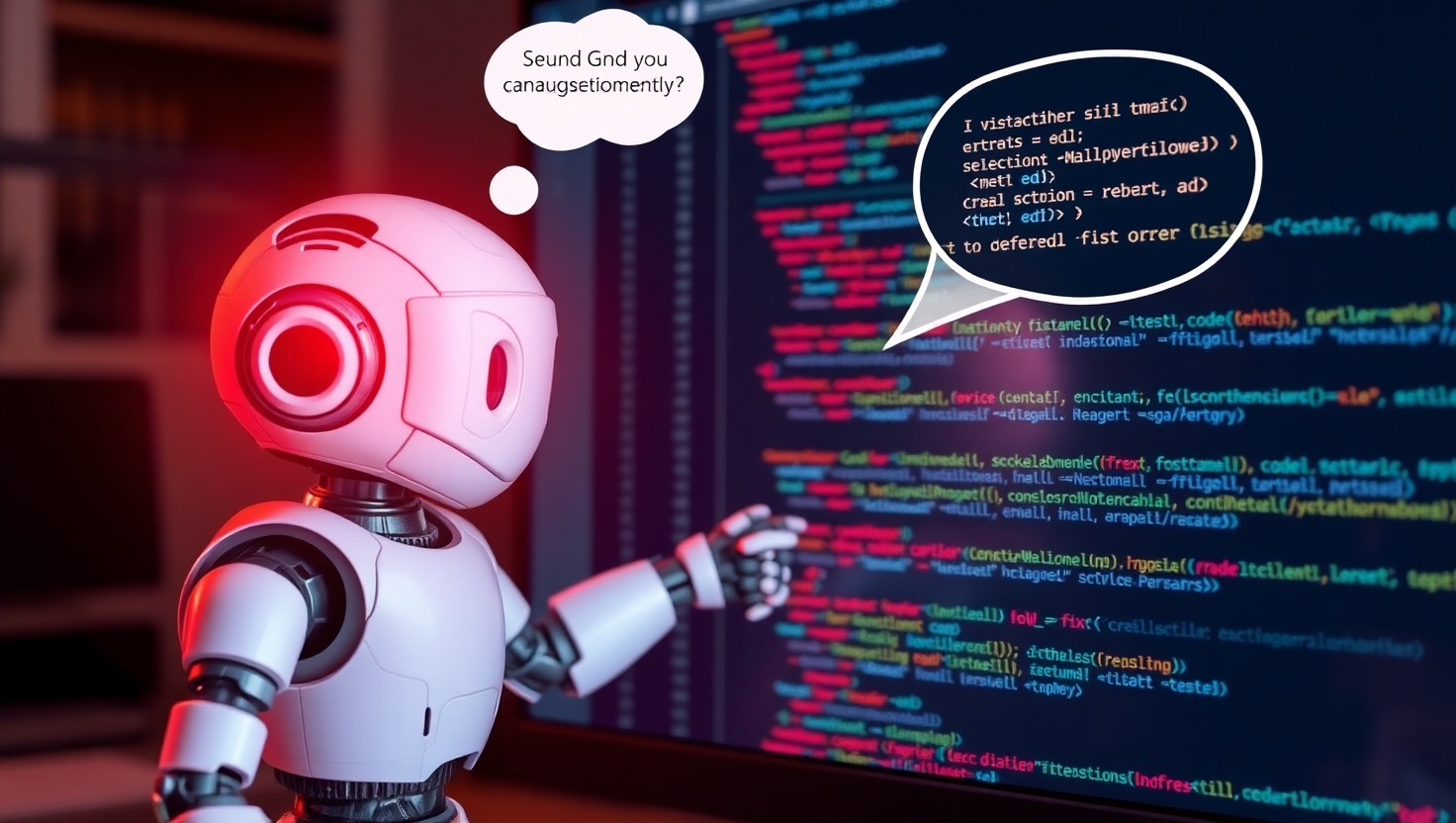In the ever-evolving world of software development, a new trend is reshaping how we create applications and systems. Enter vibe coding a revolutionary approach that leverages artificial intelligence (AI) to generate functional code based on natural language prompt. If you’re wondering how this impacts the future of software engineering or whether it’s just another fleeting trend, you’ve come to the right place. In this article, we’ll explore the concept of vibe coding, its benefits, challenges, and how code agents are transforming the way developers build software in 2025 and beyond.
Vibe coding isn’t just about writing code faster; it’s about shifting the focus from syntax-heavy tasks to ideation and creativity. As Andrej Karpathy, who coined the term, explains, “Vibe coding is coding where you fully trust AI and don’t even read the code you just follow the vibes”. This paradigm shift has profound implications for both seasoned developers and newcomers alike. Let’s dive deeper into this transformative trend.
What is Vibe Coding?

A Paradigm Shift in Software Development
At its core, vibe coding represents a novel style of programming where AI tools take the lead in translating human ideas into executable code. Unlike traditional methods that require meticulous attention to detail, vibe coding allows users to describe their vision in plain English (or any other natural language), and the AI generates the corresponding code.
For instance, instead of manually typing out lines of Python to sort a dataset, you could simply tell your AI assistant, “Sort this list by date,” and let it handle the rest. This hands-off approach enables rapid prototyping and reduces the cognitive load on developers.
The Role of Code Agents
Code agents, also known as AI-powered assistants, play a pivotal role in vibe coding. These intelligent systems iterate, lint, and test the generated code to ensure it works seamlessly. By automating repetitive tasks, code agents free up developers to concentrate on higher-level problem-solving and innovation.
Why Vibe Coding Matters in Today’s Digital Landscape
The rise of vibe coding comes at a critical juncture when businesses demand faster delivery times without compromising quality. Here’s why this approach is gaining traction:
- Speed and Efficiency : Vibe coding accelerates the development process, allowing teams to bring products to market quicker than ever before.
- Lower Barrier to Entry : Non-technical individuals can now participate in software creation, democratizing access to technology.
- Creativity Over Complexity : Developers no longer need to memorize obscure syntaxes—they can channel their energy toward solving complex problems creatively.
Startups and smaller teams, in particular, benefit from vibe coding due to its ability to expedite the development of Minimum Viable Products (MVPs).
Benefits of Vibe Coding


Enhanced Productivity
One of the most significant advantages of vibe coding is its impact on productivity. With AI handling the heavy lifting, developers can complete projects in record time. For example, imagine building a full-fledged e-commerce platform in days rather than months.
Error Reduction
Human error is inevitable, but AI minimizes mistakes through automated testing and validation processes. According to recent studies, AI-assisted coding can reduce bugs by up to 40% compared to manual coding.
Democratization of Technology
By lowering the technical barrier, vibe coding opens doors for entrepreneurs, designers, and hobbyists to experiment with software development. This inclusivity fosters innovation across industries.
Challenges and Limitations
While vibe coding offers numerous benefits, it’s not without its drawbacks.
Lack of Control
Critics argue that vibe coding resembles “write-only” programming, meaning once the code is generated, tweaking it becomes challenging. Without visibility into intermediate outputs, users may struggle to make precise adjustments.
Trust Issues
Fully trusting AI-generated code requires a leap of faith. While modern algorithms are incredibly sophisticated, they aren’t infallible. Developers must remain vigilant to catch potential oversights.
Learning Curve
Despite simplifying certain aspects of coding, mastering vibe coding still involves understanding how to craft effective prompts. Poorly worded instructions can lead to suboptimal results.
How Code Agents Are Revolutionizing Software Development
Streamlining Workflows
Code agents act as virtual collaborators, streamlining workflows and enhancing team efficiency. They integrate seamlessly with existing tools like GitHub, Gitpod, and Cursor Composer, providing real-time feedback and suggestions.
Enabling Cross-Disciplinary Collaboration
With vibe coding, non-developers such as product managers and UX designers can contribute directly to the coding process. This cross-disciplinary collaboration leads to richer, more user-centric solutions.
Supporting Rapid Prototyping
Whether you’re testing a new feature or validating a business idea, vibe coding facilitates quick iterations. Teams can experiment with multiple versions of a project before committing to a final design.
The Future of Vibe Coding: Predictions and Trends
As we look ahead to the future of vibe coding, several key trends are poised to shape its evolution. These advancements not only promise to enhance the capabilities of AI-powered code agents but also address some of the challenges currently associated with vibe coding. Let’s explore what lies on the horizon for this transformative approach to software development.
Generative AI Takes Center Stage
Generative AI is already making waves in the software development landscape, with 40% of industry professionals identifying it as a pivotal trend. In the context of vibe coding, generative AI will become even more sophisticated, enabling developers to create highly complex applications with minimal input. Imagine describing an entire application architecture in natural language and having the AI generate fully functional, production-ready code—all while adhering to best practices and design principles.
Seamless Integration Across Platforms
One of the most exciting developments is the growing integration of vibe coding tools with popular development platforms. For instance, tools like Cursor Composer and GitHub Copilot are expected to offer deeper compatibility with project management systems, version control platforms, and cloud environments. This seamless interoperability will allow teams to collaborate more effectively, ensuring that AI-generated code aligns with organizational workflows and standards.
Enhanced Debugging and Testing Capabilities
While current AI assistants excel at generating code, debugging remains a challenge. However, advancements in predictive analytics and automated testing are set to change this. By 2025, AI tools will likely incorporate real-time error detection and resolution features, allowing developers to identify and fix issues before deploymen. This shift will further reduce the burden on human developers and improve the reliability of AI-generated code.
Democratization of Advanced Technologies
Vibe coding is not just about empowering developers—it’s about democratizing access to cutting-edge technologies. As these tools become more intuitive and user-friendly, non-technical professionals such as marketers, educators, and small business owners will be able to leverage AI to build custom solutions tailored to their need. This democratization has the potential to spark innovation across industries, from healthcare to entertainment.
Ethical Considerations and Responsible AI Use
With great power comes great responsibility. As vibe coding becomes more widespread, ethical concerns surrounding AI-generated code will come to the forefront. Issues such as intellectual property rights, algorithmic bias, and transparency will need to be addressed to ensure that AI tools are used responsibly and equitably. Developers and organizations must prioritize ethical guidelines to maintain trust and accountability in the era of vibe coding.
By staying informed about these trends, developers and businesses can position themselves at the forefront of this technological revolution. Whether you’re adopting vibe coding for personal projects or enterprise-level applications, understanding its trajectory will help you make the most of its potential.
Actionable Takeaways
If you’re intrigued by vibe coding and want to incorporate it into your workflow, here are some actionable steps:
- Familiarize Yourself with AI Tools : Explore platforms like Cursor Composer, GitHub Copilot, or Gitpod to understand their capabilities.
- Practice Crafting Effective Prompts : Start small by describing simple tasks and gradually move to more complex projects.
- Stay Updated on Trends : Follow thought leaders and blogs to stay informed about advancements in AI-assisted development.
- Collaborate with Your Team : Encourage colleagues to adopt vibe coding practices to maximize collective productivity.
FAQs About Vibe Coding
What is vibe coding?
Vibe coding is an emerging style of programming that uses AI to generate and refine code based on natural language prompts.
Who coined the term “vibe coding”?
The term was coined by Andrej Karpathy, who describes it as coding where you fully trust AI and don’t scrutinize the generated code.
Is vibe coding suitable for beginners?
Yes! It lowers the barrier to entry, making it accessible to non-technical individuals.
Can vibe coding replace traditional programming?
While it enhances productivity, vibe coding complements rather than replaces traditional methods, especially for highly specialized tasks.
What are the main challenges of vibe coding?
Challenges include limited control over intermediate outputs, trust issues with AI-generated code, and the need for effective prompt crafting.
Conclusion
Vibe coding marks a significant milestone in the evolution of software development. By harnessing the power of AI, developers can achieve unprecedented levels of speed, efficiency, and creativity. However, embracing this transformation requires adaptability and a willingness to collaborate with intelligent systems.
As we look to the future, one thing is clear: vibe coding isn’t just a trend—it’s a glimpse into the next era of programming. Whether you’re a seasoned developer or a curious beginner, now is the perfect time to explore this exciting field.
Ready to embark on your vibe coding journey? Dive into the resources mentioned above, experiment with AI tools, and witness firsthand how code agents are revolutionizing software development.

